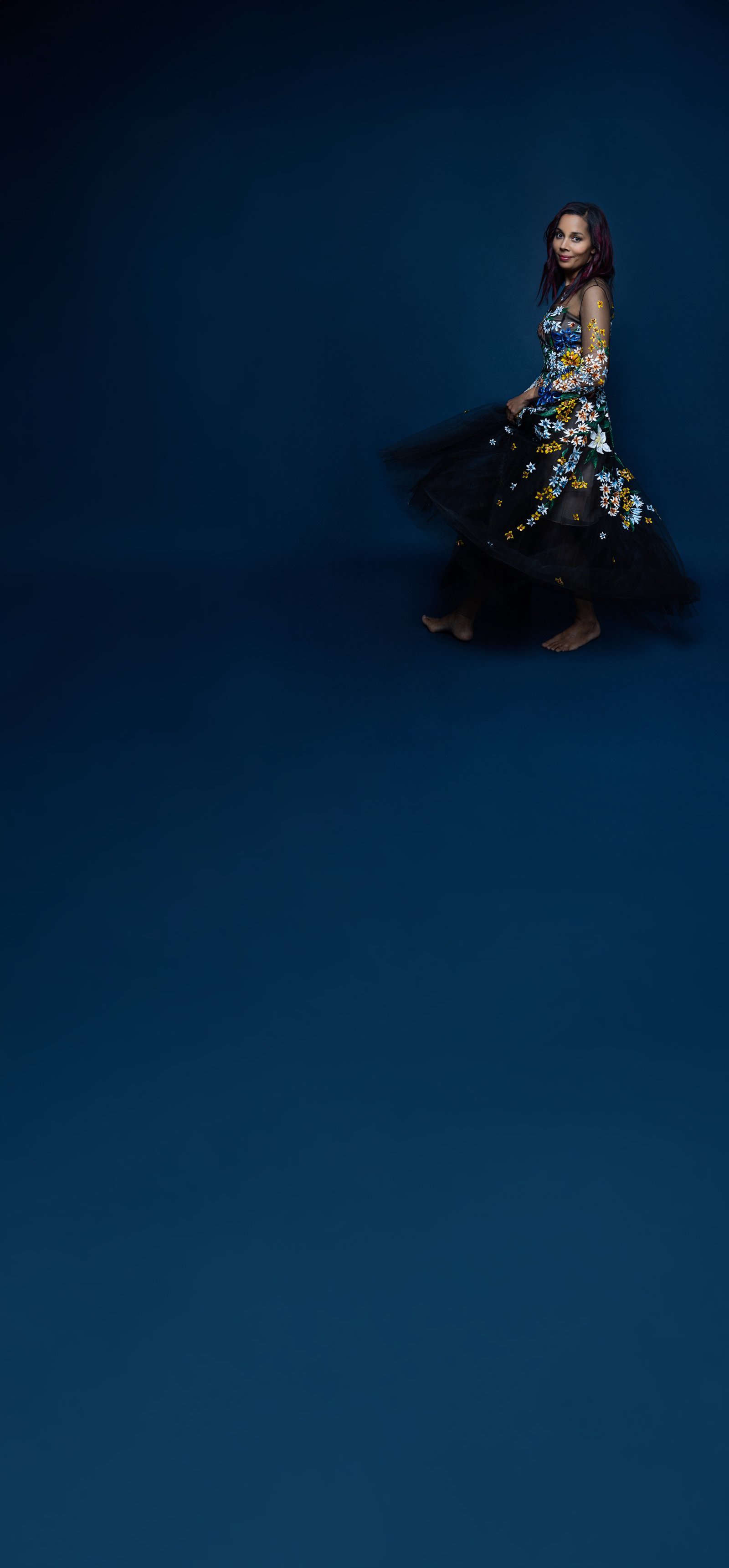
University of Michigan
Artist-in-Residence
The University of Michigan’s Arts Initiative has announced musician, composer and scholar Rhiannon Giddens as its inaugural U-M Artist-in-Residence.
Read more: Rhiannon Giddens named Arts Initiative’s first U-M Artist-in-Residence
The Arts Initiative believes in the power of artists to imagine new ways of learning and connecting. Beginning in Fall 2024 and biennially thereafter, the U-M Arts Initiative will award one distinguished artist an academic year-long residency with strong public components. The selected artist will have access to the many resources that U-M has to offer, and will create new work or further develop in-progress work that advances the mission of the Arts Initiative and the University.
U-M faculty may work in a joint appointment with the Arts Initiative to design classes and collaborate on research areas. An individual faculty member or team will have the opportunity to teach classes related to the artist, collaborate with the artist on research, and expand their own research through creative partnership. Symposia, panel discussions, mini-conferences, teach-ins, and other educational platforms are also encouraged to engage students, scholars, the campus, and broader field.
-
Provide a uniquely valuable experience for an artist to create, grow, and impact the world
Grow the artist’s interests, which may include, but are not limited to: artistic research, skill development, interdisciplinary collaboration, capacity building, institutional critique, activism, and/or education
Engage the University and region in matters related to artmaking, the impact of art on culture, justice, community building, or contemporary issues facing society
Influence the University of Michigan’s approach to supporting artists, students, and faculty in the future
Create new work or further develop existing work while creating pathways for students to learn from a professional artist
Illuminate opportunities that artistic works-in-progress present as strong mediums for campus and community learning
Build relationships across academic disciplines and create campus-wide demonstrations that illuminate the power of the arts
Bring to bear the University of Michigan’s vast resources in support of the creativity of artists
-
Biennially, the Arts Initiative will open nominations for an artist who:
Is well-known. Artists nominated should be easily researched online by name and artistic medium.
Has demonstrated interest and strength in engaging with communities
Is open to sharing their artistic process/works-in-progress
Will work closely with students, faculty, and the overall university community
Includes interdisciplinary components in their work
Uses their work to address a contemporary challenge facing society
Can creatively leverage the University’s resources for experimentation and artistic development
Selection Process
Any University of Michigan Faculty or Staff Member can make a nomination. Self-nominations will not be accepted.
A review panel will select three potential awardees ranked by preference. The Arts Initiative will formally invite nominees in order of preference (if #1 is not interested/available, #2 is approached, etc.)
Prior to inviting an artist, The Arts Initiative team will work with appropriate units related to the artist's discipline and interests to confirm each unit’s level of partnership and participation. (i.e. Stamps, Taubman, UMMA, IH, UMS, SMTD, LSA, SSW, Ford, etc)
One artist will be selected biennially for the award.
Expectations
Placing focus on research, experimentation, and campus/community engagement, the U-M Artist-in-Residence Award provides the selected artist opportunities for learning, research, and exchange, by offering access to people, space, and tools across the UM campus. While the selected artist is not expected to reside in Ann Arbor for the duration of AY 2024-25, a minimum of four in-person visits are expected. These contributions will be diffused across the academic year. The U-M Arts Initiative and campus partners will work with the visiting artist to finalize a schedule that sponsors productive and reciprocal connections with faculty, staff, students and the general public.
-
Who is eligible to nominate an artist?
University of Michigan faculty and staff are eligible to submit a nomination.How many visits will the artist make?
The artist will be required to travel to Michigan on four to six occasions: at the beginning of the residency, at convenient midpoints, and towards the end. The artist’s travel expenses and lodging will be covered.How is the artist compensated?
In addition to travel and lodging, the artist selected for the U-M Artist-in-Residence Award will be given a $100,000 stipend for their time and work. Additional related expenses will be covered by the Arts Initiative separately.Is this a residency or commission?
It might be both! If the final output from the U-M Artist-in-Residence award is a completed new work that U-M acquires or shares ownership of, that is great! But, this is not expected nor required. The spirit of the program is collaboration, research, connecting with the community, and honoring the artistic process.Can academics apply?
This research residency is intended for individuals who consider themselves artists.Will you give preference to University of Michigan alumni?
No. We consider all applicants equally, regardless of whether they attended the University of Michigan.Will the artist be given use of a studio or an office?
Depending on the artist’s primary discipline, studio space may be provided during in-person campus visits.What are examples of University of Michigan resources will the artist be able to access?
The artist will have access to a range of resources at the University of Michigan including: assistance from the U-M Arts Initiative and campus partner staff, access to University libraries, media centers, audio and video recording studios, museums, fabrication facilities, and most importantly, networks of people pursuing scholarship across disciplines.Questions?
Contact Kathryn Grabowski-Khairullah, Program Curator.
